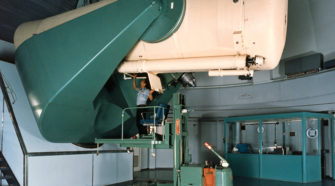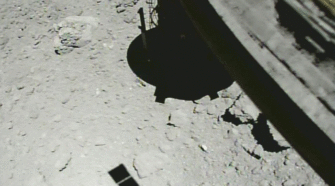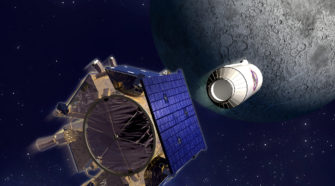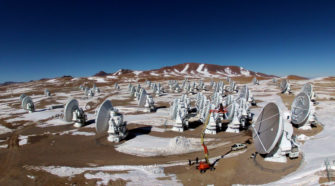History
This Week in History: July 12-18
JULY 12, 2001: American astronomer Gary Melnick and his colleagues publish their discovery of water vapor around the old, evolved star CW Leonis, suggesting the presence of exocomets around that star. The subject of exocomets, including the importance of this discovery, is discussed in a previous “Special Topics” presentation. JULY 12, 2126: Comet 109P/Swift-Tuttle, the …
This Week in History: July 5-11
JULY 5, 1687: British physicist Isaac Newton publishes his Philosophiae Naturalis Principia Mathematica (Mathematical Principles of Natural Philosophy), usually known as the Principia, wherein he lays out what is now known as his Law of Universal Gravitation. Part of Newton’s work in the Principia was based upon his calculations of the Great Comet of 1680 …
This Week in History: June 28-July 4
JUNE 28, 1911: A meteorite falls to the ground near the village of El Nakhla El Bahariya, Egypt. The Nakhla meteorite was one of the first-known meteorites determined to have come from Mars. A fragment of the Nakhla meteorite supposedly struck and killed a dog, although there has been no independent confirmation of this. “Martian …
This Week in History: June 21-27
JUNE 22, 1978: U.S. Naval Observatory astronomer James Christy discovers Charon, Pluto’s first-known moon. Charon, the discovery of which would be confirmed with a series of transit and occultation events between it and Pluto that began in 1995, provided a major step in our understanding of Pluto’s size and physical nature. Pluto, its system of …
This Week in History: June 14-20
JUNE 14, 1770: The renowned French comet hunter Charles Messier discovers a moderately bright comet in Sagittarius. 2½ weeks later this comet passed just 0.015 AU from Earth, the closest confirmed cometary approach to Earth in history. The comet, named after Swedish mathematician Anders Lexell, who computed its orbit, was later perturbed into a much …
This Week in History: June 7-13
JUNE 7, 2013: A team led by Dutch astronomer Nienke van der Marel announces their discovery of a planet-forming – and comet-forming – disk of material surrounding the young star Oph-IRS 48 in the constellation Ophiuchus, using data obtained with the Atacama Large Millimeter/submillimeter Array (ALMA) telescope in Chile. An ALMA image of this disk …






